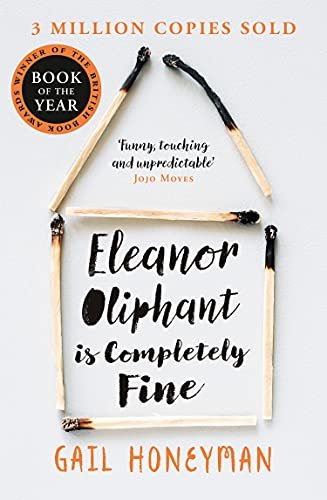
Eleanor Oliphant is an office worker with zero social life. She dreads the weekends, waiting for Monday to arrive. Her colleagues laugh at her; she can not carry out even a single conversation without awkward remarks and has not cut her hair for years. At the beginning of the book, she meets the IT person in the office, Raymond, which will be a significant event in her life. They meet Sammy, an old guy, in a strange situation and get closer to him and his family.
As the novel proceeds, you start getting more information about Eleanor, and you can make out that there is something wrong with her life. Her conversations with her Mommy, the scar on her face, her fascination with a celebrity singer – all these are indications of a possible dark past and an unstable present.
The narration style is “slice of life,” and you may just get bored to hear about the minutiae of Eleanor’s life. The writing style is engaging, and information is passed about the novel’s central mystery. Still, you can miss many clues if you are not paying attention.
Unfortunately, the mystery was not quite challenging to guess for me. Even then, the novel was interesting to read, just to see how Honeyman plays out the various factors to build an exciting narration. If you like twists, this one will fascinate you with the twist that comes in the third part of the book.
The change in the personality of Eleanor is described very sensitively by the author. It is clear that Raymond and Sammy play a significant role in Eleanor’s transformation. They do it by just accepting Eleanor as she is. The core message is a very positive one, and the change described is pretty authentic. Honeyman is a master in describing the shades of gray in real life, depicting her characters in a three-dimensional, rich manner.
The narration is first-person, which turns out to be the biggest draw of the novel. Honeyman has clearly worked very hard in understanding the thought processes of someone who has mental health issues. It is also a great example of doing a “show” of what Eleanor is going through rather than a direct “tell” of her affliction. The reader is left to guess Eleanor’s condition based on her thoughts which are available to them. As an author, this is the biggest thing one can learn from this book. It also shows the power of first person narration, and why one would do it even when it constrains the world view of the novel to a single camera kind of narration.
It took me time to read this, partly because of the slow pace and a lack of hook, but I did not DNF it, unlike some other novels I have done recently. I recommend this for readers interested in characters with mental health issues, subtle romances, and happy endings.
Rating: 3.5/5